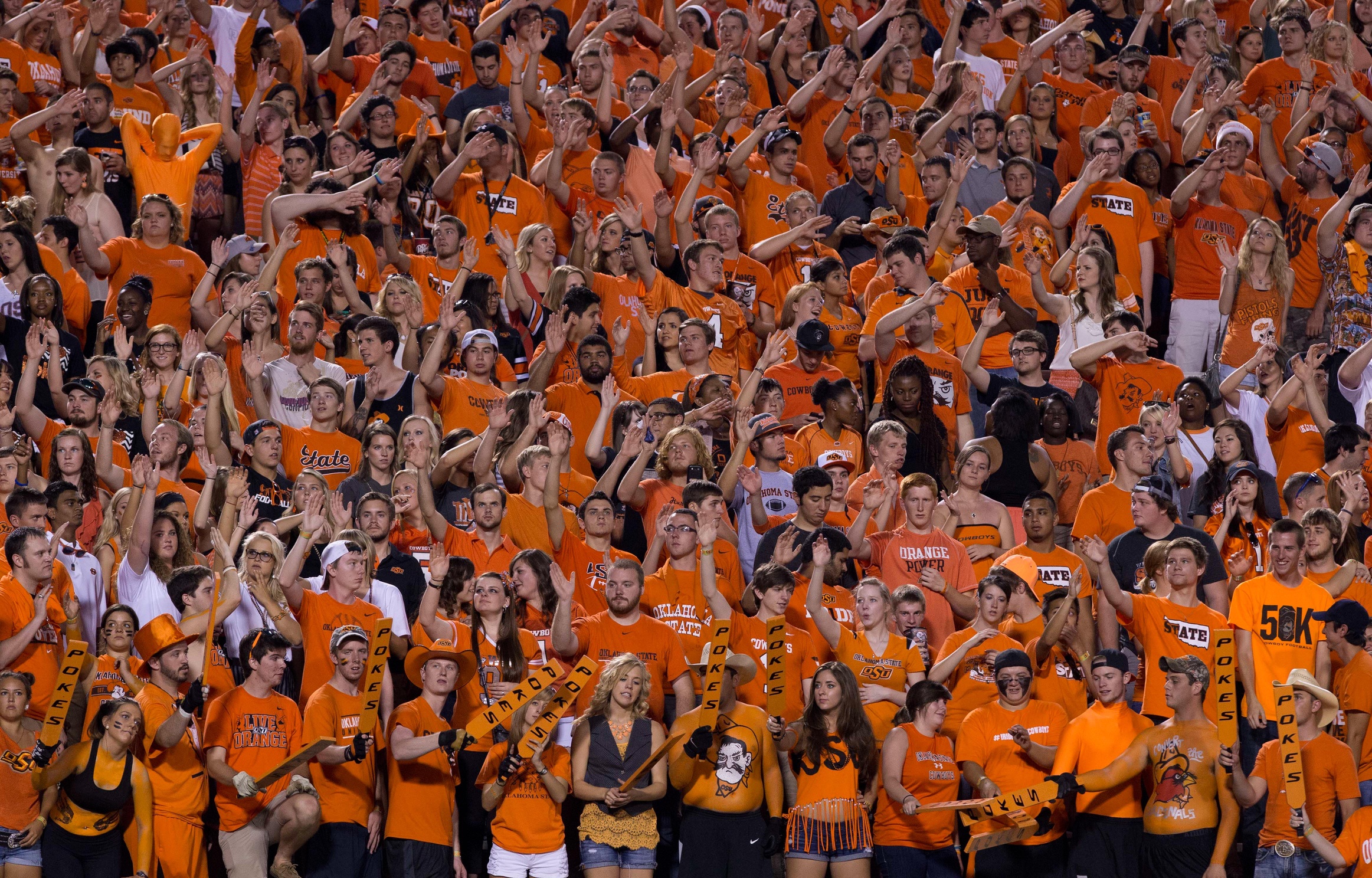Football
10 thoughts on part five of the Sports Illustrated series
Part Five of the Sports Illustrated series on OSU was maybe the most intriguing to me but that still doesn’t mean I thought it was good.
Part five of the Sports Illustrated series is out (a day early) and it actually raises some interesting points and questions. I’m not sure any of them answer the question “how did Oklahoma State get so good so fast?” but let’s jump in.
1. Let me preface all of this by saying I sympathize with college kids from bad neighborhoods who try to make it out and either can’t or don’t. I’m from a pretty great family and a very stable home but my wife and I are foster parents (sorry to those of you who read regularly, I know you’re getting sick of hearing that but it feels relevant in this case) so we see some stuff.
Nothing breaks my heart more than kids — specifically guys — not being able to escape the life-sucking cycle of drugs, abuse, alcohol etc. described in this final part of the SI series. I think these things can be looked at critically but I’m leery of SI’s desire to place as much blame at the feet of OSU as they are.
2. Two statements I’m having a hard time reconciling:
He concedes that he drinks too much and smokes too much marijuana.
I’m the mother—— who wakes up every day and I think, F—, how am I gonna eat today?
3. Does anyone writing this understand how much of college is about showing up and doing the right thing? And do they understand that if you live in Oklahoma and were even on the Oklahoma State football team (not a star, on the team) how willing Oklahoma State grads are to give ex-players a good job with good health insurance in the Oklahoma area? I’ve got Andre Sexton’s number if SI needs it.
4. But in the past decade so many players have been kicked out or driven out of OSU, many returning in shame to neighborhoods and lifestyles they hoped desperately to escape, that the sheer number of those downtrodden and embittered raises the question: How much did the program really care?
The gray area of letting dudes stay and kicking them off is large, for sure, but is OSU doing a worse job than anyone else? And is booting Herschel Sims good proof of that? And honestly, how does any of this, as SI put it, help OSU’s rapid ascent?
5. 43.5% of the players who enrolled at the school left before exhausting their five years of eligibility, and that’s not including one player who died and those who declared early for the NFL. Though oversigning is a widespread practice in college football, this is a staggering churn rate.
Welp, that kinds of pokes some holes in using APR, as SI did in the academics portion, to say that OSU sucks at academics. SI debunking its own theories is the best part of this stuff — people like me just have to point at the two things, no extra work necessary!
6. SI told me in this piece that OSU tried to send Kevin White to a therapist because he didn’t talk very much and, in Part 3, told me OSU eschewed drug therapy for dudes who needed it. Come on.
7. This was certainly a jewel. No mention of tapes or evidence or anything in the first four parts. And then this pointed notification in Part 5: Cruz said in a taped, two-hour interview last April.
8. This shouldn’t matter (I don’t think) but here’s how SI described Artrell Woods’ injury in today’s SI:
Woods didn’t scream; he simply asked a teammate to help him up. Then he tried to stand. “I couldn’t feel my legs,” Woods says. “After that, I lay back down, and that’s when I started feeling all the pain.”
And here’s how Perrish Cox (again, not a bastion of the truth at all costs, I presume) described it in 2007:
The defensive back’s voice softened as he remembered the moment.
“He just started screaming.”
9. A free education and an opportunity to get a good job is “all” OSU offered Woods, according to SI:
The school designated Woods a medical non-counter, which meant he could stay on scholarship without playing football. That may seem like a kind gesture, but it was merely a creative way for OSU to get Woods off the books: His scholarship wouldn’t count toward the team’s limit of 85.
This is the great struggle in all of this, right? If you’re OSU you don’t have an obligation to keep a guy on scholarship all four years — you guys know scholarships are a one-year agreement, yes?[1. This is a whole other, and much longer, post.] — but the non-counter thing is, according to this Deadspin article, for an incapacitated athlete.
Was Woods incapacitated? Doesn’t really seem so to me but he also said (and this wasn’t mentioned in the article) that it was his choice to leave and that he was mad when OSU just let him.
10. On this part:
Or if the coaches had ever asked Sims why he had bounced around so much, he would have welcomed the opportunity to answer.
I find it hard to believe that a dude with an MTV series on his life was “unknown” by his coaches. If I knew about Sims upbringing I’m going to to out on a limb and say Mike Gundy did as well.
11. Defensive end William Bell says that before he enrolled in 2004, coaches didn’t know that he was already a habitual drug user.
IS THIS SOMETHING YOU NORMALLY TELL THE COACHES TRYING TO RECRUIT YOU TO PLAY FOOTBALL AT THEIR SCHOOL?
12. You can shut it down after this sentence:
Sims’s dismissal may have been warranted, but the school had shown a willingness to overlook serious transgressions if the player involved were someone the Cowboys wanted on the field.
He was one of the 10 most-heralded recruits (of the recruiting service era) in school history and was, at the time, behind a future NFL player!
13. I don’t know if this is true, but it’s really frustrating if it is. On Woods’ desire to be a video game designer:
When he arrived at Oklahoma State he thought he would begin taking classes to enable that backup plan. Then he met with academic counselors and says he was told there were certain courses that football players should avoid because they conflicted with practice and/or were too taxing.
“They were just telling me to take these classes, the ones they pick for you,” Woods says. “They said don’t worry about your major until you are a junior.” He did what he was told, kept taking the classes put in front of him, never once speaking up about what he hoped to do if football failed him.
That sucks for people that are actually trying — again, if true — and I could see it being true.
14. Between 2002 — the year of Les Miles’s first full recruiting class at Stillwater — and 2010, 43.5% of the players who enrolled at the school left before exhausting their five years of eligibility, and that’s not including one player who died and those who declared early for the NFL.
Though oversigning is a widespread practice in college football, this is a staggering churn rate. Texas Christian, another fast-rising program in the Big 12, lost about 23.4% of its players during that time.
Give me the national average, or at least the Big 12 average. Not just TCU.
15. Sports Illustrated’s logic in this part was as follows:
This shouldn’t be big business and therefore on-the-field performance shouldn’t affect how discipline is doled out for off-the-field behavior. That totally discards the logic of the fact that college football IS a big business and players DO get let go (with off-the-field behavior often used as the excuse) because they aren’t performing on the field.
I’m not a big fan of this, but that’s kind of the system within which everyone operates, no? Are the other 124 teams immune to such behavior?
If your employer employs a crappy employee at Chesapeake or Devon — one unable to get the job done — does not your employer look for any reason at all to let him or her go? This is also referred to as “being efficient.”
Gundy isn’t innocent in this — if you don’t think he jumps at the opportunity to can a player who isn’t who he thought he was, then you’re crazy. But that’s a NCAA issue, not an Oklahoma State one.
16. The bottom line is this: If you come into college as a football player on scholarship and take care of your crap in the classroom and don’t get into trouble off the field then you make it very difficult for a school to take away your scholarship. This article on scholarship renewal details that. If Gundy (or any other coach) had a systematic history of not renewing scholarships because of performance, we would know about it.
This is an NCAA problem at-large — not an Oklahoma State-specific one — which brings us full circle with all of this madness.
The NCAA is an archaic mess.
Johnny Manziel was the “cause” of the cause-and-effect of Texas A&M boosters donating $740 million in the last year and that’s just insane. There are other less insane but more ridiculous problems with this facade we continue to perpetuate, but I don’t believe SI touting a series to look into “the rapid ascent of the Oklahoma State University football program into a national powerhouse” is the right way to expose them.
You want to talk, I’ll talk — and this is a great place to start, but I’m bummed that you felt like you had to lay OSU down at the alter of the NCAA as if to say “start here.”
That seems like a dirty game in and of itself.

-
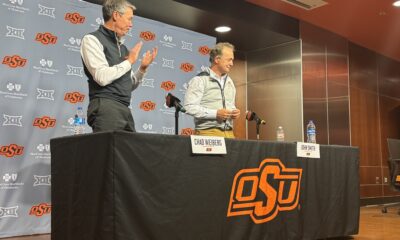
 Wrestling4 days ago
Wrestling4 days agoThe Top 5 Quotes from John Smith’s Retirement News Conference
-
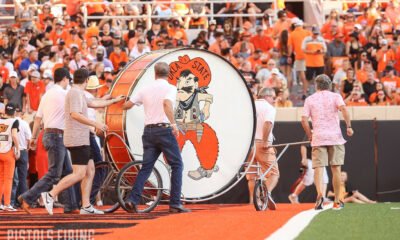
 Football5 days ago
Football5 days agoWide Receiver Prospect Kameron Powell Commits to Oklahoma State
-
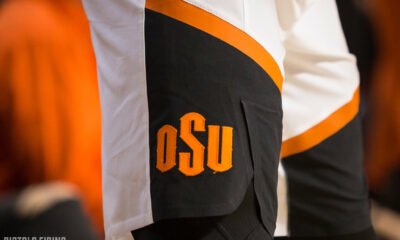
 Hoops5 days ago
Hoops5 days agoReport: Former Arkansas Guard Davonte Davis to Visit Oklahoma State
-
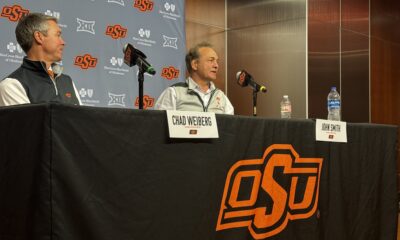
 Wrestling4 days ago
Wrestling4 days agoOSU Wrestling: The Impact John Smith Had on His Final Boss, Chad Weiberg

